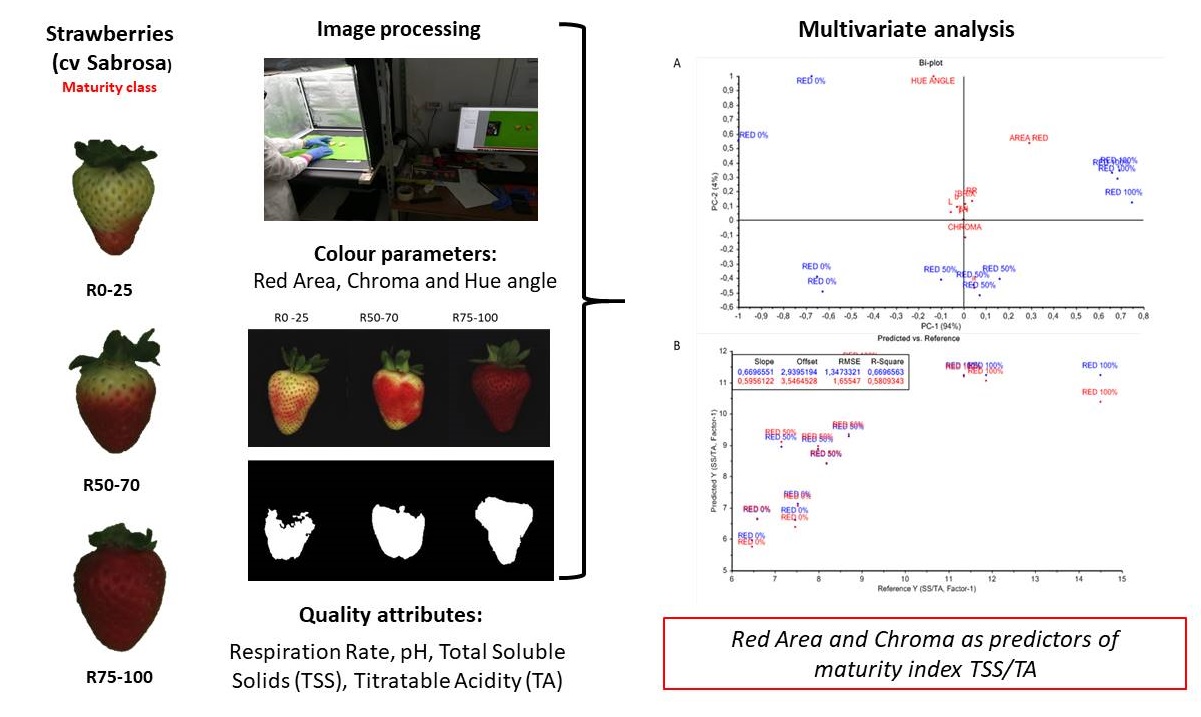
Published 2023-02-21
Keywords
- Computer vision system,
- cv. Sabrosa,
- Fragaria × ananassa Duch,
- harvest,
- multivariate analysis
- ripening ...More
How to Cite
Copyright (c) 2023 Antonia Corvino, Roberto Romaniello, Michela Palumbo, Ilde Ricci, Maria Cefola, Sergio Pelosi, Bernardo Pace

This work is licensed under a Creative Commons Attribution 4.0 International License.
Abstract
Traditionally, strawberries are harvested manually when the typical colour of the cultivar does not reach at least 80% of the surface. The focus of this research activity is to develop an automatic system based on image analysis in order to objectively define the optimal harvest time. Strawberries (cv. Sabrosa), with different degrees of maturation, were analyzed in four different harvesting periods and subsequently selected and classified, based on the ripening percentage, in three maturity classes: R0-25, R50-70 and R75-100. Each class of 10 strawberries, evaluated in triplicate, was subjected to image analysis and physiological and qualitative evaluation by measuring the following parameters: respiration rate, pH, total soluble solids content, and titratable acidity. The images captured, by a digital camera, were processed using Matlab® software and all the data found were supported by multivariate analysis. The image processing has made it possible to create an algorithm measuring objectively the percentage and the saturation level of red assigning the fruits to each class. Principal component analysis shows that discriminating parameters are the Chroma and the red Area, then used in a Partial Last Square Regression (PLSR) model to predict the TSS/TA ratio with R2 of 0.7 and 0.6 for calibration and validation set, respectively.




